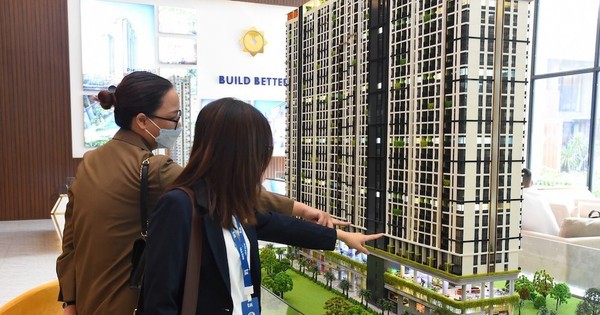Many Affordable Real Estate Projects Introduced
In recent times, several businesses have unveiled “affordable” housing projects to the public. One renowned investor recently introduced a development project in Ho Chi Minh City with an investment of 1.1 trillion VND. Construction work on this project began in December 2023, and the foundation has already reached 30% completion. The project is expected to deliver 780 apartments ranging from 42 to 72 square meters, with an estimated price of 1.4 to 2.2 billion VND per unit. Despite the affordable prices, all apartments are equipped with high-quality furnishings, making them an attractive option for many buyers.
Another housing project in Long An is being built on a 2-hectare property with five blocks of 17 to 18 floors. The market will have access to nearly 1,700 apartments ranging from 38 to 88 square meters. These apartments are expected to be priced between 20 and 24 million VND per square meter. The developer has also signed a partnership agreement for a luxury apartment project in Vinh Hai, Nha Trang, Khanh Hoa. The project is set to launch in May with prices starting from 1.5 billion VND per unit, offering long-term ownership.
Furthermore, a project with nearly 5,000 apartments in Thuận An, Bình Dương province, has been restarted after a two-year hiatus due to funding shortages and legal obstacles. This project comprises high-rise residential towers and a commercial center on a 3.73-hectare plot of land, with a total investment of 8.282 trillion VND.
These developments signify positive movements in the real estate market in the southern region, which has been stagnant for the past 2-3 years.
Market Outlook
According to Lê Hoàng Châu, Chairman of the Ho Chi Minh City Real Estate Association (HoREA), the real estate sector continues to recover and grow steadily, attracting the most foreign direct investment (FDI) and leading the stock market’s performance alongside the financial and banking sectors. With the ongoing recovery, the real estate market is expected to return to normal operations and enter a safe, healthy, and sustainable development cycle from the second half of this year, paving the way for even stronger growth from 2025 onwards.
However, after a period of rapid growth in all segments, the real estate market has exposed several limitations such as supply-demand imbalances, abandoned urban areas, and a shortage of affordable housing.
Challenges in the Industry
Ngô Quang Phúc, CEO of Phú Đông Group, believes that housing prices depend on key factors such as land acquisition costs, land-use fees, construction costs, financial costs, and expected profits. Out of these factors, businesses only have control over expected profits, while other factors lie beyond their control.
Finding suitable land is currently the biggest challenge for real estate developers. Land scarcity and rising prices have made this task increasingly difficult. Land-use fees have also increased significantly in recent times. With the Land Law of 2024 coming into effect, land prices will be determined by the market, further driving up land-use costs. Construction costs have seen mixed trends, with some expenses decreasing while others, such as fire safety systems and labor costs, have skyrocketed.
Developers are eager to lower housing prices to improve sales, but the high costs of project development must be factored into the final price. To offer reduced prices, businesses are forced to lower their profit expectations. For Phú Đông Group, profit expectations for each project range from only 10-15%.
Business Today provides further insights into the real estate market and other financial news.

